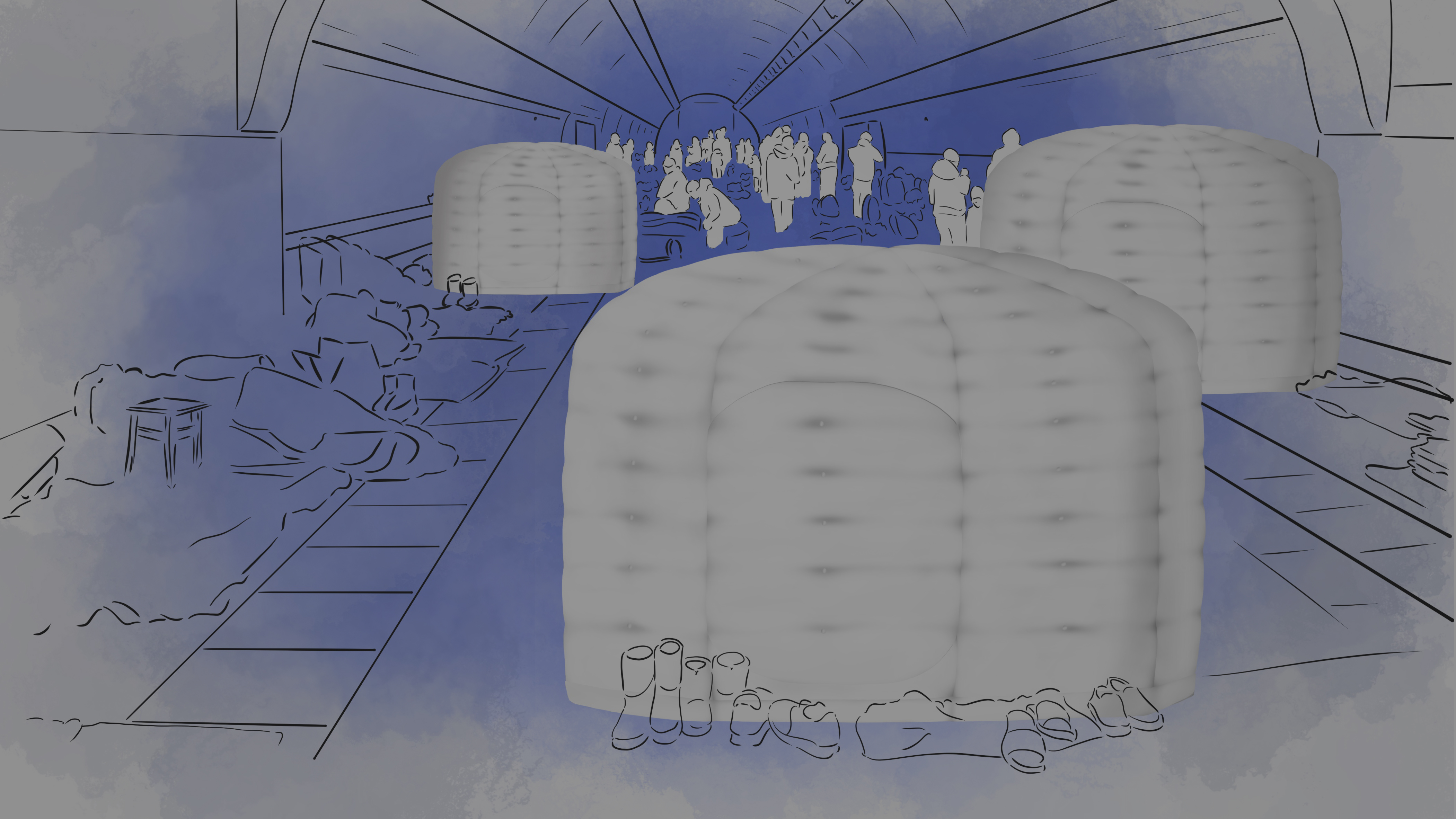
The "HeatGloo" project aimed to develop a passive heating solution for crisis situations. Over 10 weeks, the project group created HEAT-Gloo, a flexible tent that utilizes human-generated heat. It is easy to assemble, provides warmth in crisis situations, and meets critical functions like ventilation and durability.
The project started with a preliminary study identifying shortcomings in existing heating products. User interviews from war-torn Ukraine guided the design, resulting in the selection of HEAT-Gloo—a partially self-inflating octagon-shaped tent. The production design phase finalized materials and production strategy, and the detail design phase involved further development of the product, including improving the structural construction, finalizing details, prototyping, creating illustrations for better communication, and conducting an internal workshop for presentation preparation.
HEAT-Gloo is a sustainable and family-adapted heating solution, offering warmth and safety in crisis environments. It is easy to assemble, flexible for transportation, and utilizes human-generated heat.

During the initial phase of the project, we recognize the need for a crisis heat-providing product. To gain a thorough understanding of the existing product segment and its target audience, we conduct extensive analysis. We formulate a comprehensive problem description that highlights the key issues requiring attention. Additionally, we develop critical functions and a mission statement to serve as guiding principles for the project's direction and goals.
Transitioning into the ideation phase, we explore various methods to generate ideas and concepts for the heat-providing product. Through a day-long workshop, we foster divergent thinking approaches that result in 92 generated ideas, showcasing the team's creativity and exploring a wide range of possibilities. We then employ convergent thinking and selection methods to narrow down these ideas to four.
Next, we further develop the four promising ideas and evaluate each individual concept. Eventually, we select the concept that exhibits the most promise and integrate different elements into a new concept known as HEAT-Gloo. To enhance our understanding and refine the concept, we develop a calculation model in Matlab to optimize factors such as thickness, size, and materials for efficient heat transfer.
The prototyping phase brings the chosen concept, HEAT-Gloo, to life. Adopting a rapid prototyping mindset, we address various challenges by testing paper prototypes, cellular foam, and plastic bags.
With the successful development and validation of the prototype, the project advances to the production design phase. Here, we make final decisions regarding materials and procurement required for line-based production. We meticulously consider Lilla AB's resources and optimize the factory layout to ensure seamless integration and maximize efficiency. Furthermore, we determine manufacturing costs and establish a sustainable and competitive pricing strategy.
In the final phase of the project, we create detailed designs encompassing technical specifications, visual illustrations, and presentation materials. Throughout the entire project, including project initiation, ideation, concept development, prototyping, production design, and detail design, we conduct comprehensive assessments and seek approval from management. This rigorous process guarantees the successful progress of the project and ensures its alignment with the company's objectives.